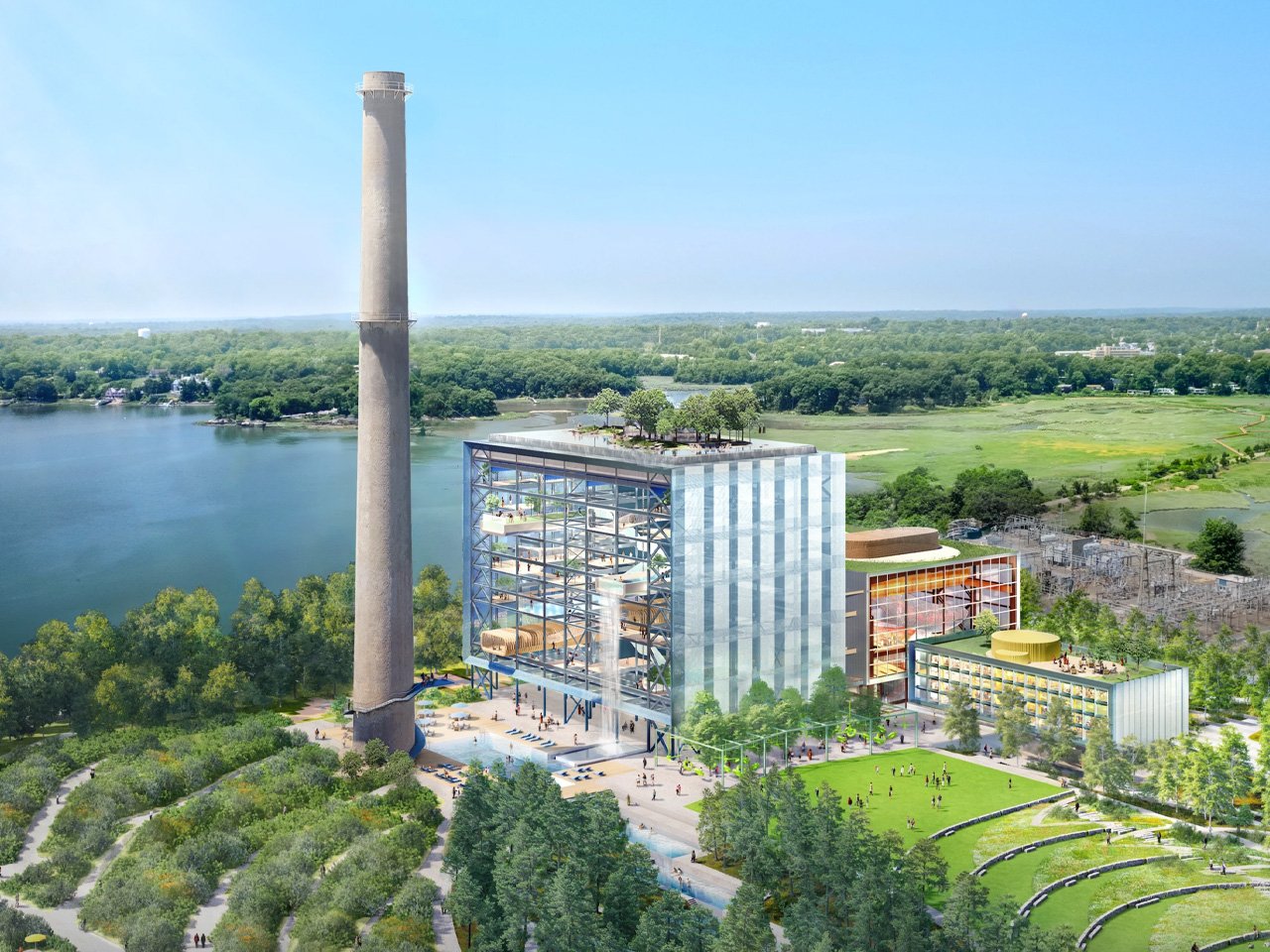Connecticut’s Manresa Island tells an unexpected story. The abandoned coal-burning power plant that once powered the region now sits empty, its concrete walls weathered by decades of salt air. But Bjarke Ingels Group and SCAPE landscape architects see something different when they look at these industrial bones. Their vision for Manresa Wilds turns 125 acres of forgotten waterfront into the kind of destination that makes you rethink what public space can be.
BIG’s strategy for the power plant feels refreshingly honest. Instead of hiding the building’s industrial past, they’re celebrating it. Those massive concrete structures that once housed turbines will become swimming pools and water slides. The architects plan to punch glass facades through solid walls, flooding the interior with daylight and opening up views of Long Island Sound. The result promises to be something uniquely beautiful: a place where kids can splash around inside what used to be an energy plant.
Designer: BIG & SCAPE
SCAPE’s landscape work extends far beyond the building itself. The team is tackling the entire island, weaving walking paths through what will become restored wetlands. They’re attempting to actively heal the environmental damage left by decades of industrial use. Native plants will replace contaminated soil, creating habitats for local wildlife while giving visitors places to wander and explore. The 1.75 miles of accessible waterfront trails mean everyone can experience the water’s edge, not just those who can afford waterfront property.
The programming strikes a smart balance between active fun and quiet contemplation. Swimming facilities anchor the power plant’s central spaces, while restaurants and event venues claim the upper floors with their panoramic water views. Families get their aquatic adventures, but there’s also room for people who just want to walk quietly along the shore. The design accommodates different needs without feeling scattered or unfocused. This planning is quite considerate and clever, as it makes public spaces actually work for the public.
We can appreciate the project’s commitment to environmental healing. SCAPE isn’t just prettying up an old industrial site; they’re trying to actively restore the island’s ecological systems. Wetland restoration creates natural water filtration while providing stopover habitat for migratory birds. The architects and landscape designers understand that sustainable design means more than just using green materials. It means creating spaces that give back to their environment rather than just taking from it.
Austin McChord’s philanthropic backing through the Manresa Island Corporation makes this ambitious 2030 timeline possible. This architectural undertaking is something larger than one transformed building; it’s a new model for how we handle industrial heritage. Rather than demolishing these concrete monuments to our industrial past, Manresa Wilds is a fine testament of how they can become foundations for public benefit. BIG and SCAPE have created something that honors both architectural history and environmental responsibility, showing us what happens when great design meets true community need.
The post From Power Plant To Playground: BIG Reimagines Connecticut’s Industrial Past As A Waterfront Park first appeared on Yanko Design.

